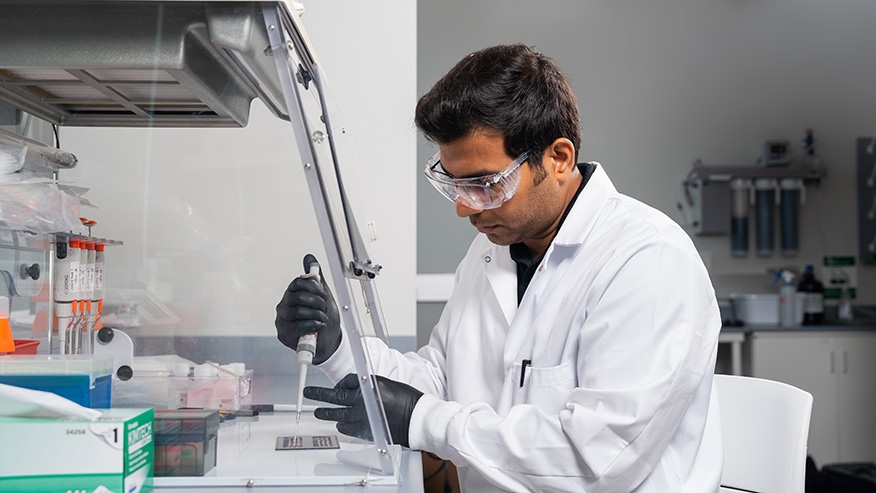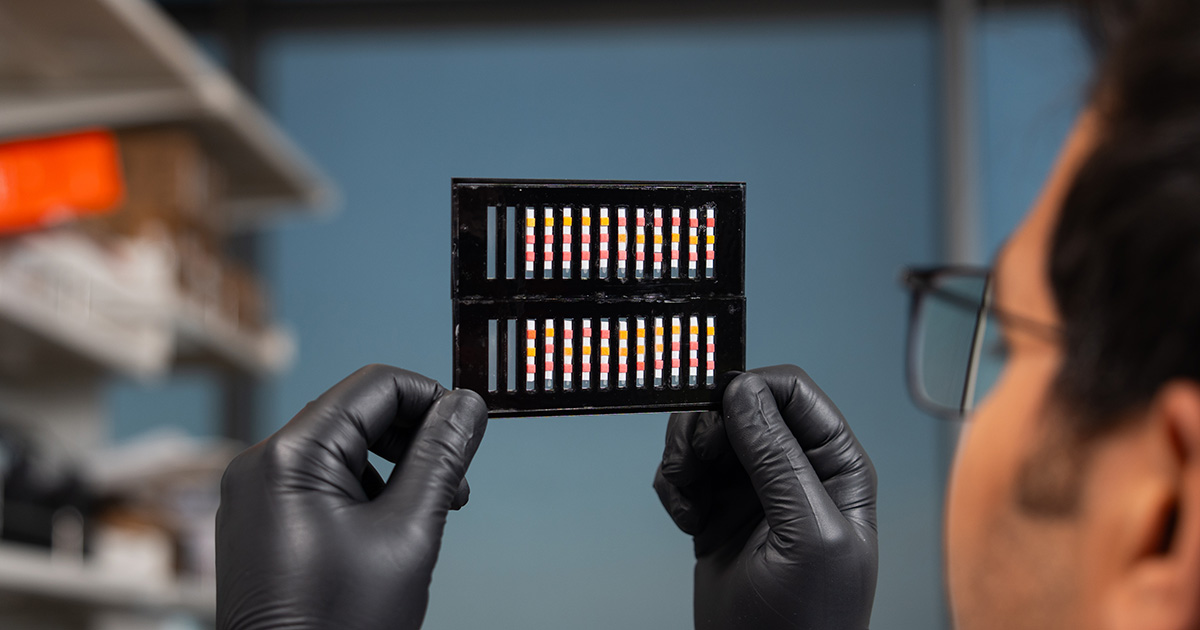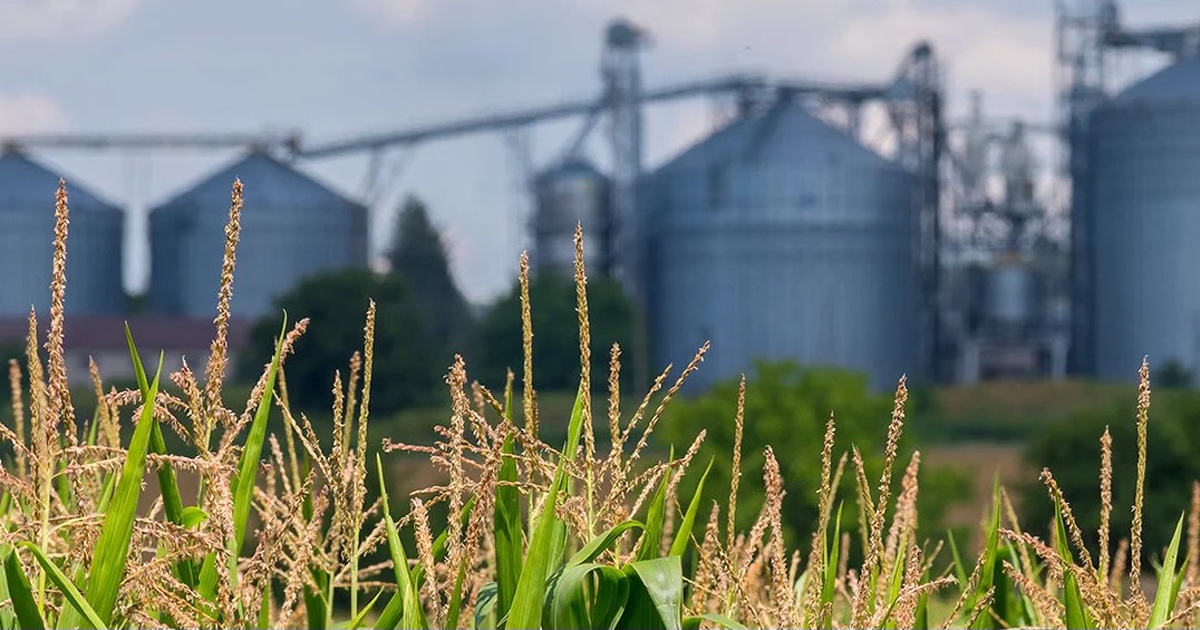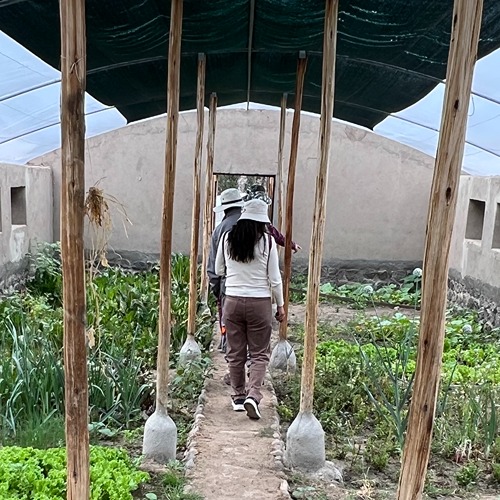Novel biosensor detects genetically modified corn and soybean
The continually expanding toolkit from Mohit Verma’s laboratory at Purdue University now includes a portable, paper-based biosensor for identifying genetically modified (GM) corn and soybean. The GM crop biosensor, based on a method called loop-mediated isothermal amplification (LAMP), offers a fast and less expensive alternative to the point-of-need molecular tools already on the market.
“Farmers can use it whenever they need it,” said Bilal Ahmed, a postdoctoral research associate in agricultural and biological engineering at Purdue. Ahmed, Verma, and four co-authors from Purdue and the Bayer Crop Science Division describe their device in the journal Biosensors and Bioelectronics. Bayer Crop Science U.S. funded the project.
Verma, associate professor of agricultural and biological engineering, and his team have previously developed assays for rapidly detecting highly pathogenic avian influenza, fecal contamination on produce farms, bovine respiratory disease, and COVID-19.
Verma disclosed the innovation to the Purdue Innovates Office of Technology Commercialization, which has applied for a patent to protect the intellectual property. OTC exclusively licensed the technology to Krishi, Inc., which specializes in rapid and easy-to-use molecular diagnostics. Verma serves as the company’s chief technology officer.
“This study was the first demonstration from our lab on the use of the biosensors on plant material,” Verma said. “It further demonstrates the use of this LAMP-based technology for One Health applications that cut across ecosystems – human, animal and plant well-being. In addition, we can simplify the use of the biosensors even further through productization as we have demonstrated with Krishi’s SherpaTM Vision platform, which uses a solid-state heater instead of a water bath for improved user-friendliness.”
Ahmed had previously worked with Verma to develop the biosensor platform for detecting fecal bacteria on produce farms. The team built on that study and the COVID-19 work in devising a biosensor to detect genetically modified crops.
The biosensor device yields results in less than an hour following sample extraction and performs test reactions for $2.90 each. “Other LAMP techniques, which are available with liquid detection methods, cost more than eight or nine dollars per test,” Ahmed noted. These exclude hardware costs, which are also lower for the Purdue system.
The biosensor checks for genetically modified traits using only a quarter-inch diameter pinch of leaf extract. Other techniques that rely on polymerase chain reaction (PCR) require costly equipment and the most purified form of extracted DNA. Ahmed called PCR “the gold standard in molecular biology.” But with the new LAMP method, “there’s no need to harvest or purify DNA from leaf tissue,” he said.
LAMP is also designed to target its intended DNA sequences, specifically like PCR, helping to ensure accurate and reliable results. “We first optimized our LAMP biosensor method with purified DNA and then we moved to the crude leaf extract,” Ahmed said.
The paper-based platform worked well with purified DNA. But the DNA extraction laboratory access requirements and associated added costs would make such a system impractical for farmers. So the team shifted to the crude extract system.
The crude extract is homogenized as a liquid, then diluted to one part extract and seven parts water. “We use that crude extract directly with our biosensor. Our biosensor with the leaf extract is as good as purified DNA,” Ahmed noted.
Still other methods, called lateral flow devices, are based on protein expression in plants. But such devices don’t work on hybrids that do not express the targeted proteins.
The researchers developed their biosensor to detect Roundup-Ready 1 and 2 varieties of soybean, and also the Roundup Hybridization System 1 (RHS1) trait in corn. Farmers have typically sterilized their corn plants by mechanically removing the male tassels of the plant to prevent self-pollination. But RHS1 incorporates a trait that performs the same task.
 A Purdue University research team led by Mohit Verma has developed a paper-based test to rapidly detect genetically modified crop traits directly from leaves. Bilal Ahmed, a research scientist in agricultural and biological engineering, adds diluted leaf extract from GM corn (RHS1) to a microfluidic paper-based analytical device biosensor cartridge for trait detection.
A Purdue University research team led by Mohit Verma has developed a paper-based test to rapidly detect genetically modified crop traits directly from leaves. Bilal Ahmed, a research scientist in agricultural and biological engineering, adds diluted leaf extract from GM corn (RHS1) to a microfluidic paper-based analytical device biosensor cartridge for trait detection. “The male part of the plant specifically is not glyphosate-resistant. Glyphosate is a pesticide. If there is a spray over that plant, the male part will die, but the rest of the plant will survive,” Ahmed said. “We successfully developed our paper-based biosensor based on that particular trait.”
The Purdue-Bayer Crop Science team commented on further potential applications. The new technology, they wrote in their journal article, “is adaptable to other GM crops or traits, offering a practical solution for field-level GMO monitoring.”
This research is a part of Purdue’s presidential One Health initiative, which involves research at the intersection of human, animal and plant health and well-being.







